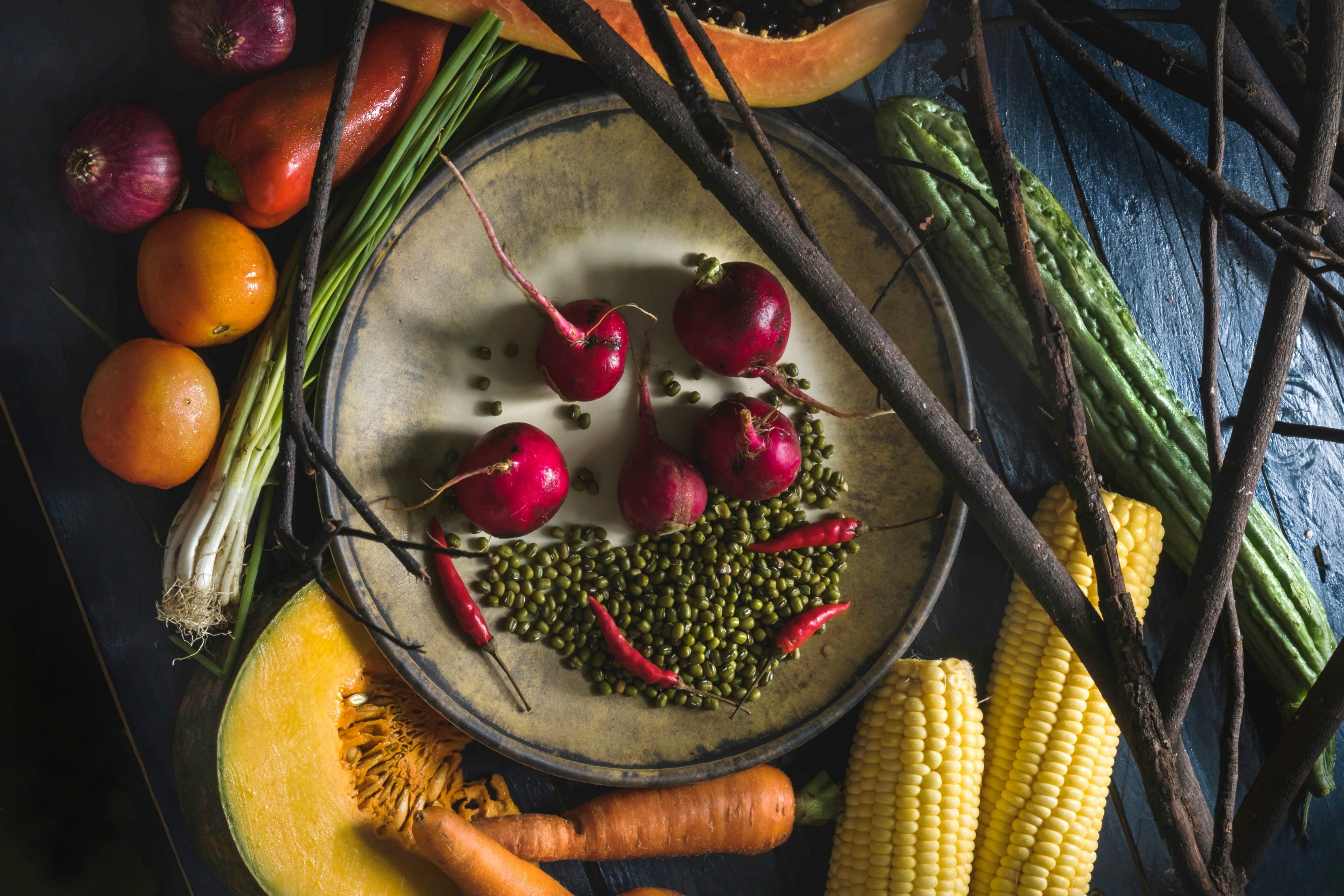
If you’re reading Wanderlust, chances are you may have thought about going vegan. There are many reasons people choose to do so—involving both health and personal conviction. Being vegan not only means consuming a strictly plant-based diet, but also leading an arguably more moral life—free from the usage of products derived from an animal or their suffering (e.g. leather, animal tested products).
Are you ready for a lifestyle change? Veganism may not be for everyone; every person has different needs, so be sure to consult with your doctor first. It was a big adjustment for me 10 years ago, but now it’s a piece of vegan cake! Here are some helpful tips if you’re interested in giving it a go.
Grocery Shopping
Vegan food is (contrary to popular belief) affordable and abundantly available in every supermarket—providing you know where to look. Browse for the things you like, check to see if they are accidentally vegan, and if not, find an alternative. Pay special attention to the last bolded line that notes what the product “contains;” traditionally, this inclusion on the label is for people who suffer from allergies, but is a good hack if you’re looking for hidden non-vegan ingredients. Obviously if the product contains milk, eggs, or shellfish, it’s a no-go. (Note that you’ll need to read the actual ingredients to see if other animal products like honey or gelatin is contained as they will not be listed as an allergen).
Other ingredients that are not vegan are: Lactic acid (dairy-based, unless noted as plant-based); some refined sugar (sugar may be carbon filtered using bone char… from the bones of animals); L-cysteine (commonly found in bagels and bread, it’s from feathers or hair, animal and human); beeswax/honey (bees are animals too). Many of your favorite grocery staple items are vegan: Whole grain bread, most pastas, rice, soups, sauces, dips, salad dressings. One can easily go unhealthy with the amount of veganized junk food out there. Just because it’s vegan doesn’t mean it’s always good for you. Stick with whole and unprocessed foods as much as possible.
Vegan in Any Restaurant
Yes—you can eat out with your non-vegan friends almost anywhere! When possible, suggest a vegan restaurant, or at least a vegetarian restaurant. Check out the main dish selections on the menu, see if your server would swap the protein or take out the cheese. Find a simple dish to alter, and try to only ask to modify one thing (ie: tofu instead of chicken, olive oil instead of butter). This not only makes it a more doable request, but also respects the chef’s time and effort to prepare. Most restaurants will accommodate your substitution request or will even prepare something that is not on the menu.
If anything, you can make a meal from the appetizers, sides, or salads. Be sure to ask about sauce ingredients as well —or look it up quickly before your server arrives. Be informed before you go, as certain cuisines will use animal ingredients in vegetable dishes. Request the parmesan off your pasta, ask for the fish sauce to not be cooked with your pad thai, and don’t go for that kimchi unless you know it is free of shrimp paste. Important note: Some places will not separate their deep-fryer oils so always check before ordering those delicious fries.
Vegan Baking
Baking is a science. Practice makes progress—as long as you know what ingredients to use. Substitute eggs in a recipe with an “egg replacer” like a mashed banana/tofu or dissolved flaxseed powder. Additionally, a variety of vegan egg powder products are on the market now. Instead of lard or butter use vegan butter or applesauce. Vegan cheeses have come such a long way with chewier consistencies when melted. There are plenty of non-dairy milks out in the world now, try experimenting with Almond, Rice, Oat or Coconut. The avocado has now made its way into many recipes due to its smooth consistency.
Many of your favorite baked goods can be veganized with some minor tweaks. Though beware that modifying your best non-vegan cake recipe may also come with feelings of wanting to compare the final product to the original! Much of the food we loved comes with our emotional attachment to it: Its exact taste, how it made us feel, our first experience with it and with whom. Know that your vegan version may come out differently and accept your new creation. Reevaluating the relationship you have with food can help you reconcile the changes you want to make. Continue to cherish your memories and pave the compassionate way for new ones.
Packing for Work Lunch
Eating out can be costly—vegan or not. Save money and make your own meals. I use a portable lunch box-sized insulated tote to carry all the things. When prepping, ensure each meal has a 1/3 ratio of protein, veggies and grains. These ratios can also change if you are wanting a specific diet like low carb, but make sure to vary it up in each meal. If you like to cook dinner, reserve half for lunch the next day. Cook pastas, couscous, or grains with a vegan protein and vegetable side. Some packable vegan protein options are: cooked beans/edamame with seaweed, soy patties, fried seitan (wheat gluten).
My favorite vegetable sides are: sauteed kale and corn, a whole boiled or baked sweet potato, or stir-fried garlicky string beans. If cooking is not an option, bring items you can assemble at work such as a pita or multigrain bread with a veggie burger, falafel, tofu, hummus and carrots, chips, or salad. Use a reusable container to pack the grains with the protein and sides, and another container for bread, raw salad, vegetables, and fruit. Remember to have a multivitamin handy for after (if your biggest meal is lunch). Bring a bag of nuts and kombucha and you’re good to go!
It’s easier than you think to go vegan. It can be gradual: Try one meal a week to start. Change can happen with a shift in perspective. Think about where your food is coming from before the next bite. Take time to cultivate an awareness of how the food you consume affects your body and mind. Chew, swallow, then pause a moment to appreciate the nourishment you are receiving. Notice how it flows into you, how you feel minutes later.
Go forth young vegan—and arm yourself with your reusable tote and Wander Without Waste kit. Good luck out there, find your way!
—
 May Yu is a devoted yogi and 200HR certified teacher, eager to share the knowledge of yoga and to aid students in balancing the mind, body and soul. A dance and gym class enthusiast, she’s passionate about yoga, art, veganism, dance, wellness, fitness, media, and entertainment. She’s currently the Accounts Payable Coordinator at Wanderlust Festival.
May Yu is a devoted yogi and 200HR certified teacher, eager to share the knowledge of yoga and to aid students in balancing the mind, body and soul. A dance and gym class enthusiast, she’s passionate about yoga, art, veganism, dance, wellness, fitness, media, and entertainment. She’s currently the Accounts Payable Coordinator at Wanderlust Festival.

